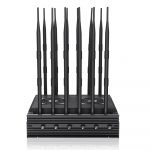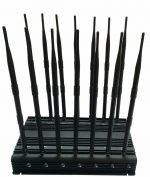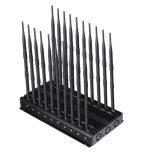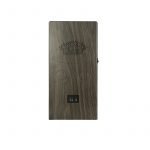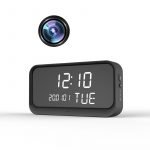A jammer electronic device interferes with the signals of cellular phones. Cell phones use radio signals for communications and the jammer needs to be programmed to broadcast on the right frequencies to disrupt them. Cell phones use two separate frequencies: the 900 MHz band for Europe and the 1800 MHz band for Asia and the 1900 MHz band for the United States. However, a jammer is capable of blocking any frequency and can be equally effective against CDMA, TDMA, GSM, DCS, Nextel, and AMPS systems. Jammers can also be used to block the signals of analog cell phones.
The range of a jammer depends on its power. Generally, a low-powered jammer blocks calls within thirty feet (9 m) but more powerful devices can create a cell-free zone the size of a football field. Law enforcement jammers have the ability to completely cut off service for an area up to a mile from the device. A jammer can also be disguised as an actual cell phone to prevent a caller from receiving it. Jammers can be small enough to fit in a briefcase, or large enough to mount on a car for convoy security.
One of the most popular types of jammers is the PL6pro. This is an upgraded version of the PL6 and can block dangerous signals in a wide range. Its output power is around 50W per channel, with a shielding distance of up to 1000 meters. Its output power can be easily customized according to the different frequencies of different signal types. A high-quality jammer will block the signal from reaching the target location.
Cell phones are a useful tool for communication, but there are people who use their mobile phones in places where they are not welcome. Many people do not respect signs that say cell phones are not allowed. Cell phones may also be used in terrorist attacks. If a terrorist uses a cell phone as a detonation device, a jammer can prevent this from occurring and save lives. If you are wondering how a jammer can help in preventing such tragedies, here are a few reasons why you should consider buying one.
Jammers are available for both mobile and land-based devices. They can prevent mobile phone calls by blocking signals from infrared and visible cameras on a mobile phone. Many venues have been sued because they were unable to offer Wi-Fi to visitors. A faultyly configured WIPS can be used to jam cellular signals. However, it is unlikely to work in commercial settings and can easily burn out. A better choice would be a jammer that works as advertised.
Fortunately, a cell phone jammer can be produced cheaply and installed passively. The device works by detecting the presence of a working cell phone within a given radius and blocks the signal. It can also jam radio signals, causing the phone to go into standby mode. The technology behind these devices is growing rapidly, but there are still a few ways to block it and keep it out of the hands of thieves.



